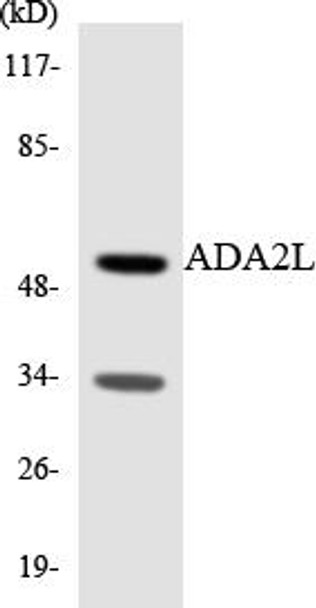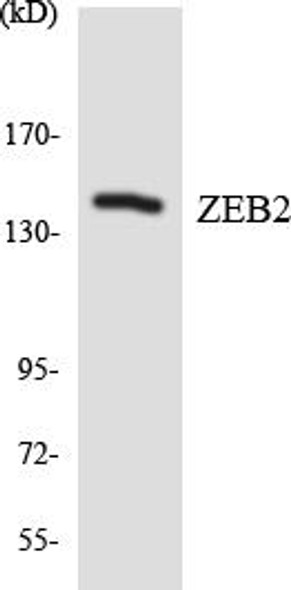Description
ADA2L Colorimetric Cell-Based ELISA
The ADA2L Colorimetric Cell-Based ELISA Kit is specifically designed for the accurate detection of ADA2L levels in cell lysates and supernatants. This kit offers high sensitivity and specificity to ensure reliable and reproducible results, making it an ideal tool for researchers studying the role of ADA2L in various cellular processes.ADA2L, or Adenosine Deaminase 2-Like protein, plays a crucial role in immune response regulation and inflammatory pathways. Elevated ADA2L levels have been linked to autoimmune diseases, cardiovascular disorders, and inflammatory conditions, making this kit essential for understanding the role of ADA2L in these diseases and potential therapeutic interventions.
With this ADA2L Colorimetric Cell-Based ELISA Kit, researchers can accurately measure ADA2L levels in cell samples, providing valuable insights into the molecular mechanisms underlying various diseases and opening up new avenues for research and drug development.
| Product Name: | ADA2L Colorimetric Cell-Based ELISA |
| Product Code: | CBCAB00952 |
| ELISA Type: | Cell-Based |
| Target: | ADA2L |
| Reactivity: | Human, Mouse, Rat |
| Dynamic Range: | > 5000 Cells |
| Detection Method: | Colorimetric 450 nmStorage/Stability:4°C/6 Months |
| Format: | 96-Well Microplate |
The ADA2L Colorimetric Cell-Based ELISA Kit is a convenient, lysate-free, high throughput and sensitive assay kit that can detect ADA2L protein expression profile in cells. The kit can be used for measuring the relative amounts of ADA2L in cultured cells as well as screening for the effects that various treatments, inhibitors (ie siRNA or chemicals), or activators have on ADA2L.
Qualitative determination of ADA2L concentration is achieved by an indirect ELISA format. In essence, ADA2L is captured by ADA2L-specific primary antibodies while the HRP-conjugated secondary antibodies bind the Fc region of the primary antibody. Through this binding, the HRP enzyme conjugated to the secondary antibody can catalyze a colorimetric reaction upon substrate addition. Due to the qualitative nature of the Cell-Based ELISA, multiple normalization methods are needed:
| 1. | A monoclonal antibody specific for human GAPDH is included to serve as an internal positive control in normalizing the target absorbance values. |
| 2. | Following the colorimetric measurement of HRP activity via substrate addition, the Crystal Violet whole-cell staining method may be used to determine cell density. After staining, the results can be analysed by normalizing the absorbance values to cell amounts, by which the plating difference can be adjusted. |
| Database Information: | Gene ID: 6871, UniProt ID: O75478, OMIM: 602276, Unigene: Hs.500066 |
| Gene Symbol: | TADA2A |
| Sub Type: | None |
| UniProt Protein Function: | Component of the ATAC complex, a complex with histone acetyltransferase activity on histones H3 and H4. Required for the function of some acidic activation domains, which activate transcription from a distant site. Binds double-stranded DNA. Binds dinucleosomes, probably at the linker region between neighboring nucleosomes. Plays a role in chromatin remodeling. |
| NCBI Summary: | Many DNA-binding transcriptional activator proteins enhance the initiation rate of RNA polymerase II-mediated gene transcription by interacting functionally with the general transcription machinery bound at the basal promoter. Adaptor proteins are usually required for this activation, possibly to acetylate and destabilize nucleosomes, thereby relieving chromatin constraints at the promoter. The protein encoded by this gene is a transcriptional activator adaptor and has been found to be part of the PCAF histone acetylase complex. Several alternatively spliced transcript variants encoding different isoforms of this gene have been described, but the full-length nature of some of these variants has not been determined. [provided by RefSeq, Oct 2009] |
| UniProt Code: | O75478 |
| NCBI GenInfo Identifier: | 317373498 |
| NCBI Gene ID: | 6871 |
| NCBI Accession: | O75478.3 |
| UniProt Secondary Accession: | O75478,Q9BVJ0, Q9UCW2, Q9UP49, A8MVD0, B3KMU9, |
| UniProt Related Accession: | O75478,AAB50689 |
| Molecular Weight: | 36,054 Da |
| NCBI Full Name: | Transcriptional adapter 2-alpha |
| NCBI Synonym Full Names: | transcriptional adaptor 2A |
| NCBI Official Symbol: | TADA2A |
| NCBI Official Synonym Symbols: | ADA2; ADA2A; KL04P; hADA2; TADA2L |
| NCBI Protein Information: | transcriptional adapter 2-alpha |
| UniProt Protein Name: | Transcriptional adapter 2-alpha |
| UniProt Synonym Protein Names: | Transcriptional adapter 2-like; ADA2-like protein |
| Protein Family: | Transcriptional adapter |
| UniProt Gene Name: | TADA2A |
| UniProt Entry Name: | TAD2A_HUMAN |
| Component | Quantity |
| 96-Well Cell Culture Clear-Bottom Microplate | 2 plates |
| 10X TBS | 24 mL |
| Quenching Buffer | 24 mL |
| Blocking Buffer | 50 mL |
| 15X Wash Buffer | 50 mL |
| Primary Antibody Diluent | 12 mL |
| 100x Anti-Phospho Target Antibody | 60 µL |
| 100x Anti-Target Antibody | 60 µL |
| Anti-GAPDH Antibody | 60 µL |
| HRP-Conjugated Anti-Rabbit IgG Antibody | 12 mL |
| HRP-Conjugated Anti-Mouse IgG Antibody | 12 mL |
| SDS Solution | 12 mL |
| Stop Solution | 24 mL |
| Ready-to-Use Substrate | 12 mL |
| Crystal Violet Solution | 12 mL |
| Adhesive Plate Seals | 2 seals |
The following materials and/or equipment are NOT provided in this kit but are necessary to successfully conduct the experiment:
- Microplate reader able to measure absorbance at 450 nm and/or 595 nm for Crystal Violet Cell Staining (Optional)
- Micropipettes with capability of measuring volumes ranging from 1 µL to 1 ml
- 37% formaldehyde (Sigma Cat# F-8775) or formaldehyde from other sources
- Squirt bottle, manifold dispenser, multichannel pipette reservoir or automated microplate washer
- Graph paper or computer software capable of generating or displaying logarithmic functions
- Absorbent papers or vacuum aspirator
- Test tubes or microfuge tubes capable of storing ≥1 ml
- Poly-L-Lysine (Sigma Cat# P4832 for suspension cells)
- Orbital shaker (optional)
- Deionized or sterile water
*Note: Protocols are specific to each batch/lot. For the correct instructions please follow the protocol included in your kit.
| Step | Procedure |
| 1. | Seed 200 µL of 20,000 adherent cells in culture medium in each well of a 96-well plate. The plates included in the kit are sterile and treated for cell culture. For suspension cells and loosely attached cells, coat the plates with 100 µL of 10 µg/ml Poly-L-Lysine (not included) to each well of a 96-well plate for 30 minutes at 37°C prior to adding cells. |
| 2. | Incubate the cells for overnight at 37°C, 5% CO2. |
| 3. | Treat the cells as desired. |
| 4. | Remove the cell culture medium and rinse with 200 µL of 1x TBS, twice. |
| 5. | Fix the cells by incubating with 100 µL of Fixing Solution for 20 minutes at room temperature. The 4% formaldehyde is used for adherent cells and 8% formaldehyde is used for suspension cells and loosely attached cells. |
| 6. | Remove the Fixing Solution and wash the plate 3 times with 200 µL 1x Wash Buffer for five minutes each time with gentle shaking on the orbital shaker. The plate can be stored at 4°C for a week. |
| 7. | Add 100 µL of Quenching Buffer and incubate for 20 minutes at room temperature. |
| 8. | Wash the plate 3 times with 1x Wash Buffer for 5 minutes each time. |
| 9. | Add 200 µL of Blocking Buffer and incubate for 1 hour at room temperature. |
| 10. | Wash 3 times with 200 µL of 1x Wash Buffer for 5 minutes each time. |
| 11. | Add 50 µL of 1x primary antibodies (Anti-ADA2L Antibody and/or Anti-GAPDH Antibody) to the corresponding wells, cover with Parafilm and incubate for 16 hours (overnight) at 4°C. If the target expression is known to be high, incubate for 2 hours at room temperature. |
| 12. | Wash 3 times with 200 µL of 1x Wash Buffer for 5 minutes each time. |
| 13. | Add 50 µL of 1x secondary antibodies (HRP-Conjugated AntiRabbit IgG Antibody or HRP-Conjugated Anti-Mouse IgG Antibody) to corresponding wells and incubate for 1.5 hours at room temperature. |
| 14. | Wash 3 times with 200 µL of 1x Wash Buffer for 5 minutes each time. |
| 15. | Add 50 µL of Ready-to-Use Substrate to each well and incubate for 30 minutes at room temperature in the dark. |
| 16. | Add 50 µL of Stop Solution to each well and read OD at 450 nm immediately using the microplate reader. |
(Additional Crystal Violet staining may be performed if desired – details of this may be found in the kit technical manual.)






